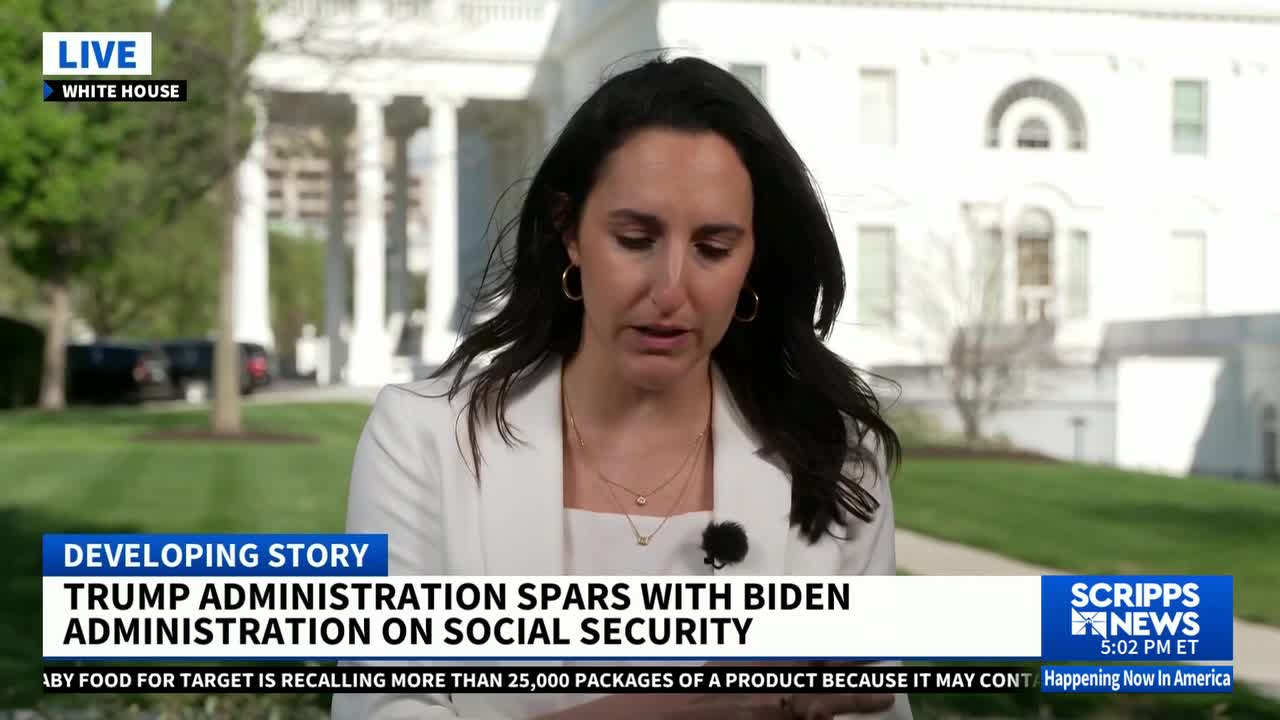Experts are questioning an administration claim that it has deported 139,000 immigrants in 100 days.

‘Mugshot’ posters of immigrant arrests line White House driveway
“Mugshot” posters of immigrants the Trump administration accused of crimes were placed along the White House driveway.
To meet President Donald Trump’s goal of deporting 1 million people a year, the administration would have to have sent well over 100,000 people packing in his first 100 days.
On Trump’s 99th day in office, his border czar says the administration is on track, deporting 139,000 people since Trump’s inauguration.
“The numbers are good,” Tom Homan said April 28 during a news conference at the White House.
But immigration experts say the figures don’t add up.
U.S. Immigration and Customs Enforcement, which is required by Congress to publicly share detention and deportation information every two weeks, has reported removing less than half that number, roughly 57,000 people.
The difference could be explained if there were more deportations along the nation’s borders, which are controlled by U.S. Customs and Border Protection.
But the Trump administration successfully sealed the Mexican border within days of taking office, so arrests there have slowed to a trickle, government data confirms.
“Unless they deported 30,000-plus people to Canada, I’m not seeing it,” said Adam Isacson, director of defense oversight at the left-leaning Washington Office on Latin America. There is no indication that many people have been removed to Canada.
Transparency in numbers is important, he and other immigration experts said.
“The public deserves to have a very transparent accounting of the enforcement that has been happening under the Trump administration policies,” said Jessica Vaughan, director of policy studies at the right-leaning Center for Immigration Studies.
“That kind of transparency is necessary for evaluating their results,” she said. “Otherwise these numbers are meaningless, especially in comparison to previous years.”
What the numbers show
Public records show a surge in immigration enforcement under Trump: a sharp decline in illegal border crossings, increased immigrant arrests and a growing number of people in ICE detention. But not 139,000 deportations.
“It would have required a massive shift in who is conducting deportations or how deportations are being counted to even begin to get close to the claim of 139,000,” said Austin Kocher, a Syracuse University researcher who regularly compiles and analyzes immigration data.
The administration hasn’t produced government records that would allow for independent scrutiny – a hallmark of accountability in governance.
“The administration is either engaging in a highly creative accounting scheme to inflate the perception of deportations or simply pulling these numbers out of thin air,” Kocher said.
There have been roughly 400 ICE deportation flights since Trump took office, according to Tom Cartwright, who tracks ICE flights daily as a volunteer for Witness at the Border. At roughly 125 people per plane, that’s 50,000 people in total, which squares with ICE’s own reporting.
“It seems ICE would have needed to operate around double the number of charter flight deportations by air other than the 400 observed to date,” Cartwright said. “I just don’t find these numbers plausible unless DHS is including some amorphous estimate for self-deportations. I would love to know.”
USA TODAY asked the White House and DHS to clarify what is counted in the deportations number. DHS spokeswoman Tricia McLaughlin told USA TODAY it includes removals by CBP and is based on “internal data.”
“We are confident in our numbers,” she said.
The White House press office was copied on communications with USA TODAY and DHS but didn’t offer a separate response.
Why it’s gotten harder to deport people
In past administrations, the bulk of deportations came from people who crossed the border illegally.
But apprehensions at the U.S.-Mexico border have dropped dramatically under Trump, as illegal border crossings have declined, according to CBP data. That’s made it challenging for the Trump administration to quickly raise its deportations number.
Interior enforcement takes more time and resources. It can take as many as half a dozen ICE agents to detain a single person when targeting immigrants in the interior. Still, ICE arrests and detentions have risen, as the Trump administration has deputized other federal agents to conduct immigration enforcement and CBP customs officers have referred more travelers to ICE for detention and deportation.
“They’ve talked about being transparent about this,” said David Bier, director of immigration studies at the libertarian Cato Institute. “And certainly they want to note their accomplishments, so what’s the problem with giving some more information than just one number with no breakdown or explanation?”
It’s not clear what the administration is counting to reach 139,000 deportations, Vaughan said. The administration hasn’t detailed what removal categories they’re including.
“They have a lot to be proud of,” Vaughan said of the administration. “There is no need to hide the removal statistics within a basket of other types of enforcement.”
Bart Jansen contributed to this report.
Lauren Villagran can be reached at lvillagran@usatoday.com.














